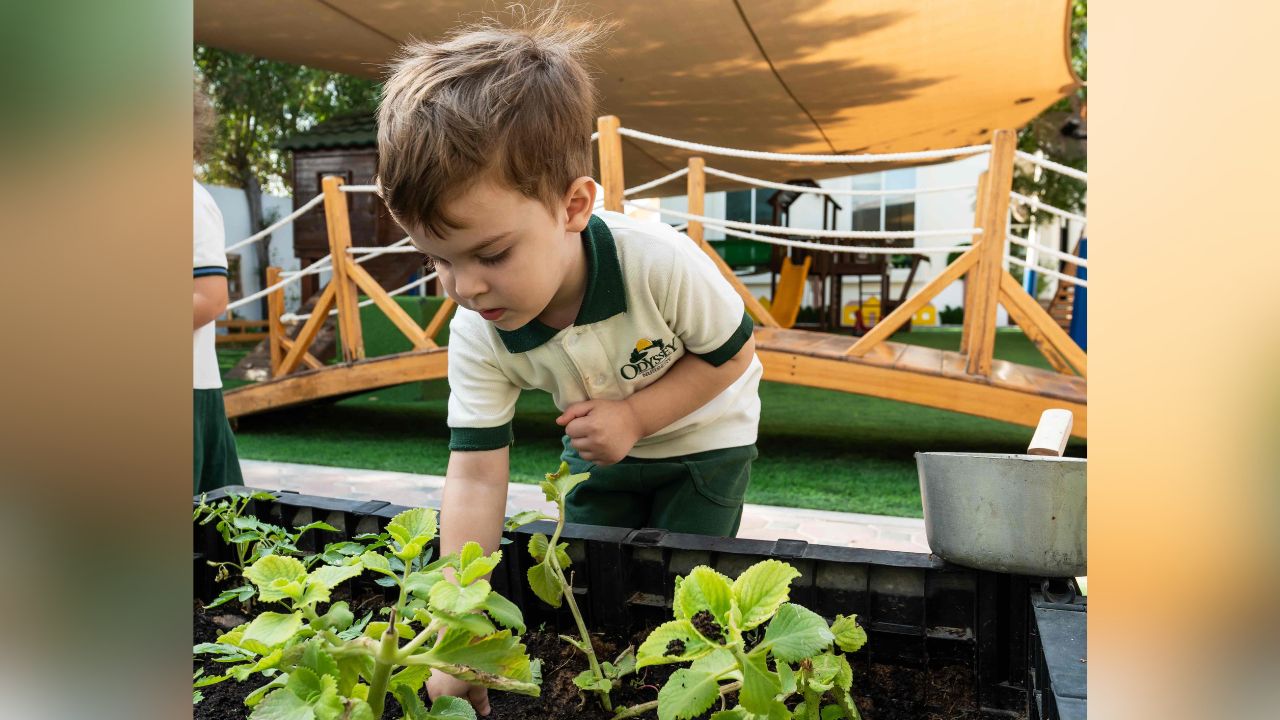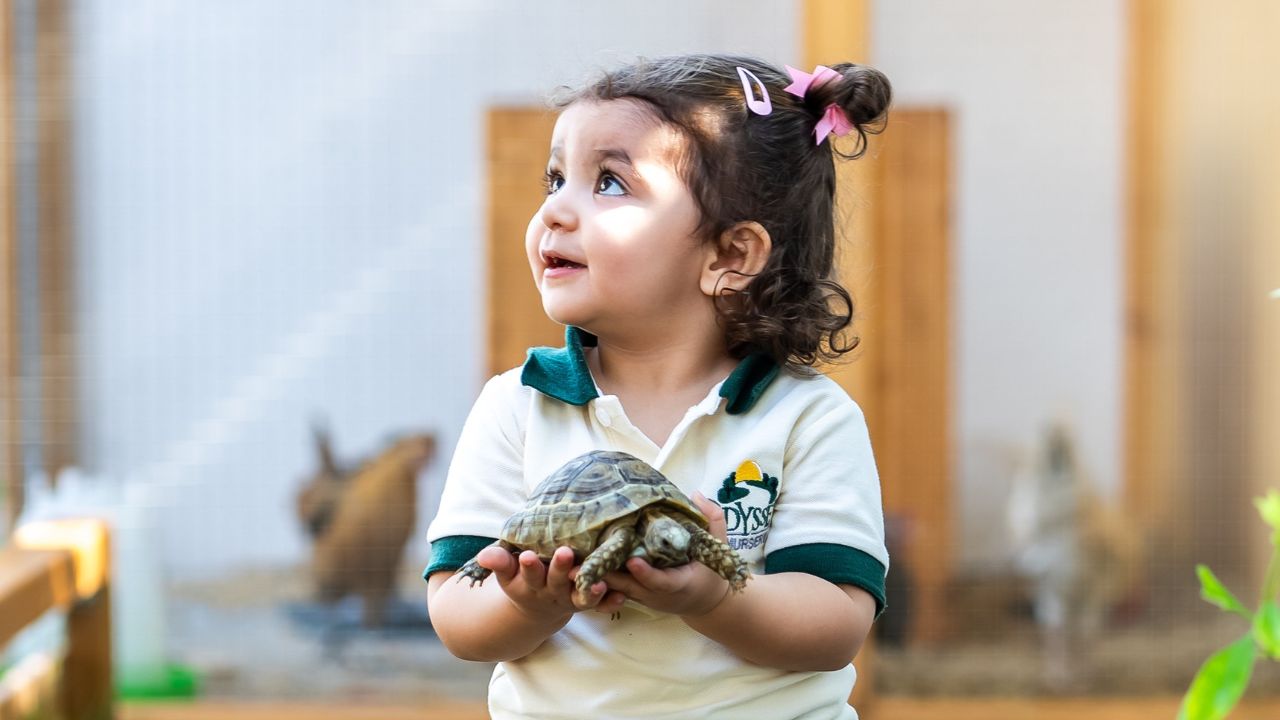
With a focus on sustainability and nature, Odyssey Nursery offers an inspiring example of how young children can engage with big ideas through art and creativity
At Odyssey Nursery, creativity and care for the planet go hand in hand.
The nursery was recently recognised internationally by University College London and the Bright Start Foundation for its Inspiring Young Voices for Sustainability project, which showcased how children can meaningfully engage with environmental issues through artistic expression.
Reggio Director Hoda El Naddaf shares how Odyssey’s approach helps young children explore big ideas—like pollution, nature, and responsibility—through joyful play, thoughtful conversations, and hands-on experiences, celebrating their natural curiosity.
Teaching big ideas in small steps

How can you talk to a two or three-year-old about climate change? It starts with the world they know.
“We begin with their everyday experiences and what they already understand,” says Reggio Director Hoda El Naddaf.
“Turning off the tap, caring for the garden, picking up litter—these small acts build a foundation of care and respect.”
Complex topics like pollution or protecting nature are gently woven into play through stories, songs, and art. The focus, Hoda explains, is not on fear but on empowerment.
“We focus on agency – what they can do. Children need to feel they can make a difference.”
Art as a language for the planet

Art, with its open-ended freedom, gives children a powerful voice.
“We use recycled materials to sculpt, paint with leaves, and create nature-inspired murals,” says Hoda.
These projects spark spontaneous conversations and questions—from “Why is the tree brown?” to “What happens to the plastic bottle?”
Creativity isn’t just about aesthetics—it’s a gateway to empathy, understanding, and thoughtful action.
Whether they’re planting seeds or sorting recycling, children’s responses are heartfelt.
“They show concern when they hear about sea turtles being harmed by rubbish,” Hoda says.
“But they also express joy in helping—watering plants, composting, and watching things grow. They are natural scientists and carers all at once.”
A nursery that reflects nature

With branches in Abu Dhabi and Dubai, sustainability at Odyssey is more than a concept—it’s part of the environment itself.
“Our spaces are filled with natural light, wooden furniture, and materials that invite exploration,” says Hoda.
Children play in green spaces, observing insects and engaging in messy play. They grow vegetables and even help decorate classrooms using sticks, leaves, and dried fruits.
It’s a living, breathing approach rooted in the Reggio Emilia philosophy, which sees the environment as the ‘third teacher.’
Children learn they are not separate from the world but deeply connected to it.
Inspiring young voices for sustainability

One recent project began with a child’s question: “Where does the rubbish go?” That simple curiosity sparked a wide-ranging exploration.
Children created signs, visited green spaces, and transformed waste into stunning artwork—painted cardboard, leaf collages, sculptures made from old toys.
Their creative journey formed the heart of Inspiring Young Voices for Sustainability.
This case study gained global recognition through the Voices of Children project by UCL and the Bright Start Foundation, with Odyssey Nursery the only Dubai nursery featured.
Sustainability starts at home
So, how can others bring this awareness to life? Parents are essential partners and play a vital role in this journey.
Hoda’s advice is refreshingly simple: “Start small and stay playful. Use what’s around you—old buttons, fabric scraps, a twig from the garden – make art and tell stories.
Ask open questions. Let your child lead. The goal isn’t to lecture; it’s to connect them with nature, through joy, curiosity, and play.”
At Odyssey, families are invited to join eco-projects—from garden days to art exhibitions using recycled materials.
“Even small habits like using reusable containers or composting reinforce the message. It’s powerful when children see their grown-ups modelling these values,” Hoda notes.
When children feel part of the natural world, they begin to care for it—not out of duty, but from the heart.
“That’s where a lifelong respect for the earth begins,” concludes Huda.
Takeaway tips for raising eco-aware children through art and play
- Start with what they know
Talk about everyday actions—turning off taps, not littering, or watering plants. These simple habits lay the foundation for environmental awareness. - Use what you already have
“Sticks, fabric scraps, old buttons”—Hoda suggests turning everyday items into storytelling tools and art materials. - Let children lead
Follow their curiosity. A question like “Where does the rubbish go?” can open up meaningful discussions and creative exploration. - Make art with purpose
Encourage open-ended projects like drawing, collage, or sculpture using natural and recycled materials. It’s not about perfection—it’s about self-expression. - Ask open questions
Try prompts like “What do you notice about the garden?” or “How could we take care of this place?” to inspire thinking and reflection. - Involve the whole family
Children learn best when their grown-ups model values. Compost together, visit green spaces, or take part in school-led eco initiatives.
For further information, see Odyssey Nursery
Follow Yalla for more education news
